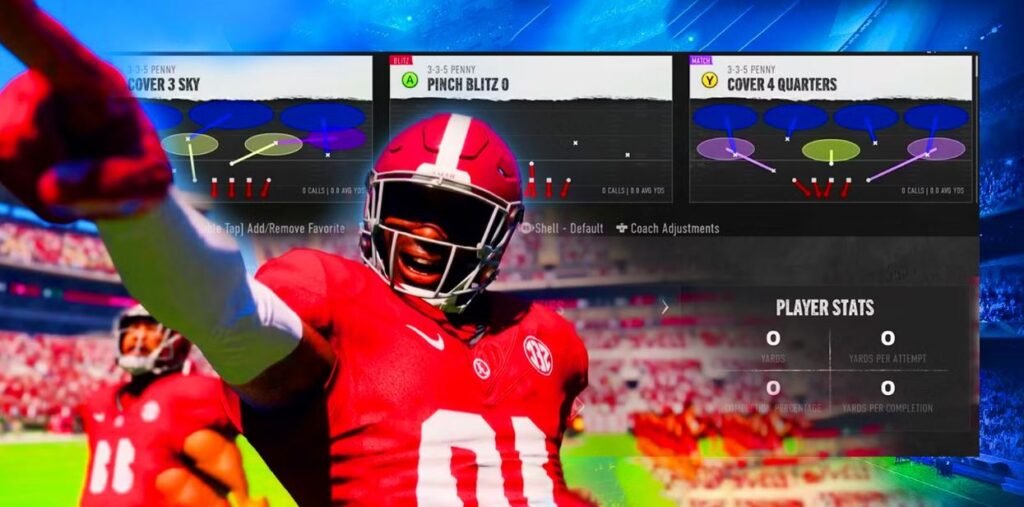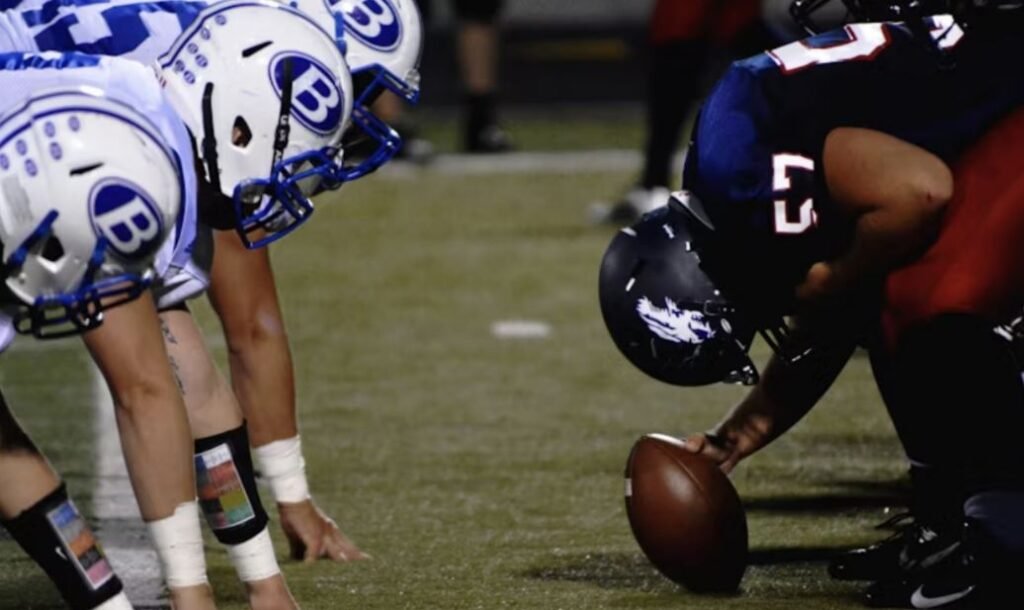The NFL is home to some of the most skilled athletes in the world, each playing specialized roles that require a unique blend of physical and mental abilities. What is the hardest position in football (NFL)? The answer depends on several factors, including the demands of each position, the skills required, and the physical and mental challenges involved. In this article, we’ll explore the most challenging positions in the NFL, why they’re difficult, and what makes them vital to a team’s success.
Factors That Determine Position Difficulty
To understand what makes a position difficult, let’s first consider the factors that contribute to the challenges NFL players face:
1. Physical Demands
Each position has specific physical requirements, whether it’s speed, strength, agility, or endurance. Some positions require intense physical contact on every play, while others demand exceptional speed or quick reflexes.
2. Mental Requirements
The mental aspect of the game is just as important as the physical. Some positions require players to make split-second decisions, read complex defensive schemes, or memorize elaborate playbooks. Understanding and processing information quickly is critical for many roles.
3. Responsibility and Pressure
Certain positions carry more responsibility, with players expected to lead, make strategic decisions, or execute under high-pressure situations. Roles that involve greater responsibility tend to experience more scrutiny and require high levels of mental toughness.
4. Injury Risk
Some positions are more prone to injuries due to frequent contact or physical demands. Playing a role with a high injury risk adds to the overall difficulty, as players must continuously prepare their bodies to handle the physical toll of the game.
The Hardest Positions in NFL Football
While each position comes with its own set of challenges, several stand out as the most demanding in the NFL due to the unique combination of physical and mental demands. Here are the positions widely considered to be the hardest:
1. Quarterback
Quarterback is often cited as the most challenging position in football—and with good reason. As the leader of the offense, the quarterback is responsible for reading defenses, calling plays, and executing passes. Here’s why the quarterback position is so difficult:
- Mental Requirements: Quarterbacks must memorize the entire playbook, read defensive coverages, and make adjustments at the line of scrimmage. They have to process complex information and react quickly under pressure.
- Physical Demands: The quarterback needs a strong arm to throw accurate passes over long distances. They also need agility to move in the pocket, avoiding defensive linemen who are trying to tackle them.
- Leadership Role: Quarterbacks are expected to be team leaders. They must communicate effectively with their teammates, stay calm under pressure, and maintain composure during high-stakes situations.
- Scrutiny and Pressure: As the face of the team, quarterbacks face intense media scrutiny and criticism. Their performance is heavily analyzed, and they often receive the most praise for wins and the most blame for losses.
2. Offensive Lineman (Especially Left Tackle)
Offensive linemen, particularly the left tackle, have one of the most physically demanding positions in the NFL. The left tackle protects the quarterback’s blind side, making it a critical role on the offensive line.
- Physical Strength and Size: Left tackles must have the size and strength to withstand defensive ends and edge rushers who are fast, strong, and skilled at getting to the quarterback. A left tackle needs to be big enough to block effectively but agile enough to handle quick moves by pass rushers.
- Technique and Footwork: Footwork is crucial for offensive linemen. They must maintain a solid base, move quickly, and stay balanced to protect the quarterback. Poor technique can lead to sacks or quarterback injuries.
- Mental Awareness: Offensive linemen need to understand defensive schemes, recognize blitzes, and communicate with other linemen. They must stay alert and react quickly to changes in the defense.
- Consistency: Left tackles face the NFL’s most formidable pass rushers every week. They must perform consistently well, as a single mistake could lead to a sack or turnover.
3. Cornerback
Cornerback is one of the toughest positions due to the combination of speed, agility, and mental acuity required. Cornerbacks are tasked with covering some of the fastest and most agile players on the field: the wide receivers.
- Speed and Agility: Cornerbacks need elite speed to keep up with receivers and prevent big plays. They must also be agile enough to change direction quickly, as wide receivers run complex routes to get open.
- Technique and Reflexes: Cornerbacks use specific techniques to stay in position and make plays on the ball. Good reflexes and hand-eye coordination are essential for reacting to the receiver and intercepting or deflecting passes.
- Mental Focus: Cornerbacks must study their opponents, recognize formations, and adjust to the receiver’s route. They also need a short memory, as they will inevitably get beaten from time to time and must quickly shake off mistakes.
- Risk of Penalties: The cornerback position comes with a high risk of penalties for pass interference or holding, as they must maintain close contact with receivers. Too much contact or an ill-timed move can lead to a penalty, giving the offense a significant advantage.
4. Wide Receiver
Wide receiver may not have the same level of responsibility as a quarterback, but it is one of the most challenging positions due to the combination of speed, agility, and physicality required to succeed.
- Route Running and Timing: Wide receivers need precise route-running skills and must time their routes with the quarterback’s throws. They have to execute routes perfectly while evading defenders, creating separation to make catches.
- Hand-Eye Coordination: Receivers must catch the ball in various situations, often in traffic or while jumping. Good hand-eye coordination and soft hands are essential for making challenging catches.
- Physical Toughness: Receivers take hits from defensive backs and sometimes linebackers. They need the physical toughness to absorb contact, hold onto the ball, and get back up for the next play.
- Mental Focus: Wide receivers need to read the defense and adjust their routes based on coverage. They also face a high level of competition, with multiple receivers on a team competing for the quarterback’s attention and opportunities.
5. Linebacker (Middle Linebacker)
The middle linebacker position, often called the “quarterback of the defense,” is incredibly demanding due to the wide range of responsibilities it entails.
- Versatility: Middle linebackers must stop the run, cover receivers and tight ends, and blitz the quarterback when necessary. They need a well-rounded skill set to perform in various roles.
- Play Recognition and Awareness: Linebackers must diagnose plays quickly, reading the offense to determine whether it’s a run or pass play. Middle linebackers often call defensive plays and adjust the defense based on the offensive formation.
- Physical Strength and Agility: Middle linebackers are involved in numerous tackles and need the strength to bring down large running backs. They also require agility to cover receivers or tight ends and move laterally to cover the width of the field.
- Leadership and Communication: The middle linebacker is often responsible for setting the defense, calling plays, and making adjustments based on what they see. This requires clear communication with teammates and a deep understanding of the defense.
6. Defensive End/Edge Rusher
Defensive ends and edge rushers have the critical task of disrupting the quarterback and stopping the run on the outside edge of the line. This position demands a combination of speed, strength, and skill.
- Physical Strength and Speed: Edge rushers need explosive power to break through offensive linemen and speed to chase down quarterbacks. They must overpower blockers and get into the backfield quickly.
- Pass-Rushing Technique: Defensive ends must use a variety of pass-rushing moves, such as spins, swims, and bull rushes, to get past offensive linemen. They need a solid technique to outmaneuver and outsmart their opponents.
- Stamina: Defensive ends are often involved in every play and need the endurance to repeatedly rush the passer or chase down running backs. Maintaining high energy and performance through multiple snaps is challenging.
- Mental Focus: Edge rushers must stay disciplined and avoid being tricked by play-action or misdirection. They need to maintain awareness and make quick decisions, especially when defending against the run or reading the quarterback.
Honorable Mentions
While these six positions are widely regarded as some of the toughest in the NFL, other positions also present unique challenges. Here are a few honorable mentions:
- Safety: Safeties must cover deep passes, stop the run, and serve as the last line of defense. They need a combination of speed, tackling ability, and field vision.
- Running Back: Running backs take a lot of hits and need strength, agility, and speed to find gaps, avoid tacklers, and contribute as pass-catchers and blockers.
- Kicker: Although less physically demanding, kickers face immense pressure. They’re often relied upon in critical situations, requiring mental focus, accuracy, and composure.
FAQs
What makes the quarterback position so challenging?
The quarterback position is demanding because it requires a combination of mental acuity, leadership, physical ability, and composure under pressure. Quarterbacks are responsible for reading defenses, making play adjustments, and executing precise throws while facing constant pressure from the defense.
Why is the left tackle position so important?
The left tackle protects the quarterback’s blind side, especially for right-handed quarterbacks. This position is crucial because a missed block can lead to a sack or even an injury. Left tackles face some of the league’s best pass rushers, making it essential for them to perform at a high level consistently.
Are cornerbacks more physically or mentally challenged?
Cornerbacks face both physical and mental challenges. They must be fast and agile to cover receivers, but they also need the mental focus to read the offense, anticipate routes, and recover quickly from mistakes. The position demands a high level of skill in both areas.
Do wide receivers face as much pressure as quarterbacks?
While wide receivers don’t face the same leadership pressure as quarterbacks, they do face significant performance pressure. Receivers are expected to run precise routes, make difficult catches, and contribute to the team’s scoring. Mistakes are often visible and can impact the team’s success.
Is the middle linebacker role more challenging than other linebacker positions?
Yes, the middle linebacker role is often more challenging due to its strategic importance. Middle linebackers need to read plays, make tackles, cover receivers, and sometimes blitz the quarterback. They are typically responsible for setting up the defense and making on-field adjustments.
Why are edge rushers highly valued in the NFL?
Edge rushers are highly valued because they can disrupt the offense by pressuring the quarterback and stopping the run. A successful pass rush limits the quarterback’s options, often leading to mistakes or sacks, making edge rushers a critical component of a successful defense.
Conclusion
In conclusion, the hardest position in the NFL depends on various factors, including physical demands, mental requirements, and the level of responsibility. Quarterback, left tackle, cornerback, wide receiver, middle linebacker, and edge rusher are some of the most challenging positions, each bringing unique skills and pressures to the game. While every position has its own demands, these roles require a blend of physical ability, mental toughness, and strategic thinking, making them the most difficult—and often the most rewarding—positions in football.




